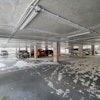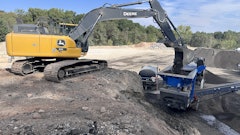The City of Los Angeles Bureau of Streets is the winner of FP2's James B. Sorenson Award for Excellence in Pavement Preservation for 2015.
Under the leadership of Nazario Sauceda, director of the Bureau of Street Services, Department of Public Works, the 40-year decline in city-wide road quality was arrested via aggressive pavement management and preservation.
Last year, the Bureau of Street Services completed the largest annual pavement preservation program in the history of Los Angeles, with a total of 2,400 lane-miles of pavement preservation completed during the FY 2014-15, the distance between Los Angeles and New York City.
"We made it happen by working incessantly -- days, nights, weekends, and holidays -- while embracing the principles of efficiency, innovation, performance stats, and intradepartmental collaboration," Sauceda said.
The Bureau of Street Services gained support for its pavement preservation program by providing quantifiable data to elected officials while educating citizens.
Today, the bureau conducts extensive community outreach to stakeholders through social media, a bureau website, notification mailers, and attendance at neighborhood council meetings. The city’s and bureau’s websites offer the public ongoing performance metrics, information on roadwork in progress, a list of monthly committed scheduled projects, and pavement condition assessments.
Maintaining the integrity of city roads pays off over time, as each dollar spent on maintaining roads in good to fair condition diminishes the need to spend four to five dollars on rehabilitating or reconstructing a road in very poor condition.
Additionally, the bureau maximizes savings by resurfacing streets in grids. A pavement preservation grid strategy allows consolidation of resources and creates efficiencies that enable the bureau to resurface more streets in the network.
Future maintenance costs are significantly reduced, as these grids can be maintained with additional slurry seal applications up to 21 years on the 40,242 street segments (residential neighborhoods) with low traffic volume. The bureau’s expectation is that fewer residential streets will need to be resurfaced in future years due to this increased level of preventive maintenance.
In 2009 the bureau completed 1,833 lane-miles of pavement preservation, getting close to the 2,000 lane-miles needed to stabilize and prevent the network’s pavement condition index (PCI) dropping below 62.
From 2012 through 2015 the bureau completed the three largest annual pavement preservation programs in the city’s history. This culminated in completion of an all-time record of 2,400 lane-miles of pavement preservation consisting of 855 lane-miles of resurfacing and 1,545 lane-miles of slurry seal.
L.A.’s public/private partnership in the use of rubberized emulsion aggregate slurry has proven to be an excellent part of the bureau’s plan. The result has extended the life of streets that are in good condition, applying on average 1,300 lane-miles of slurry per year. In the same time frame the annual resurfacing program of 800 to 900 lane-miles per year focused on thin lift overlays and rehabilitating streets.
Deadline for entries to the 2016 Sorenson Award is July 1. For more information, or to submit nominations, please contact FP2’s executive director, Jim Moulthrop, at 8100 West Court, Austin, TX, 78759, voice (512) 970-8865, e-mail at [email protected].















